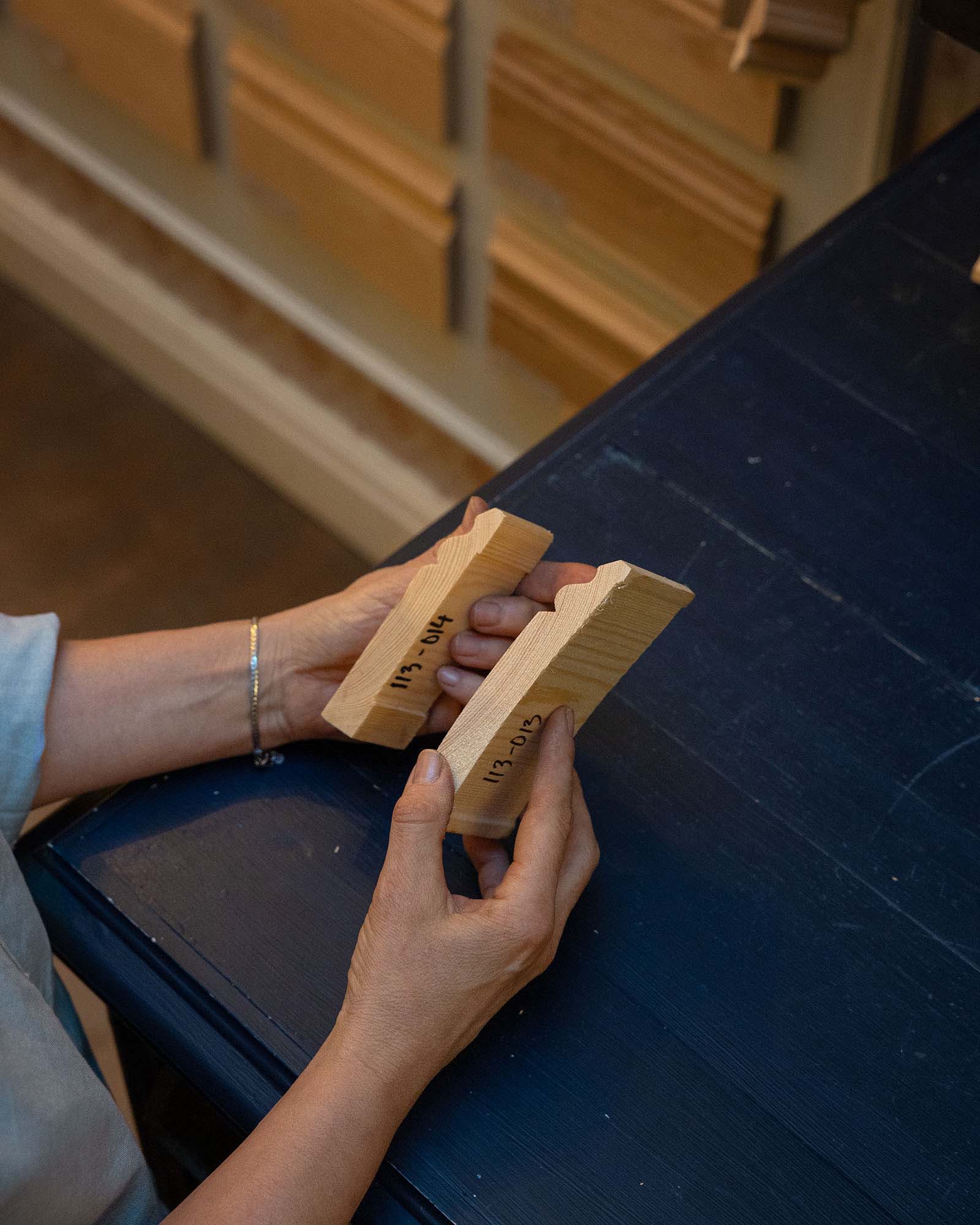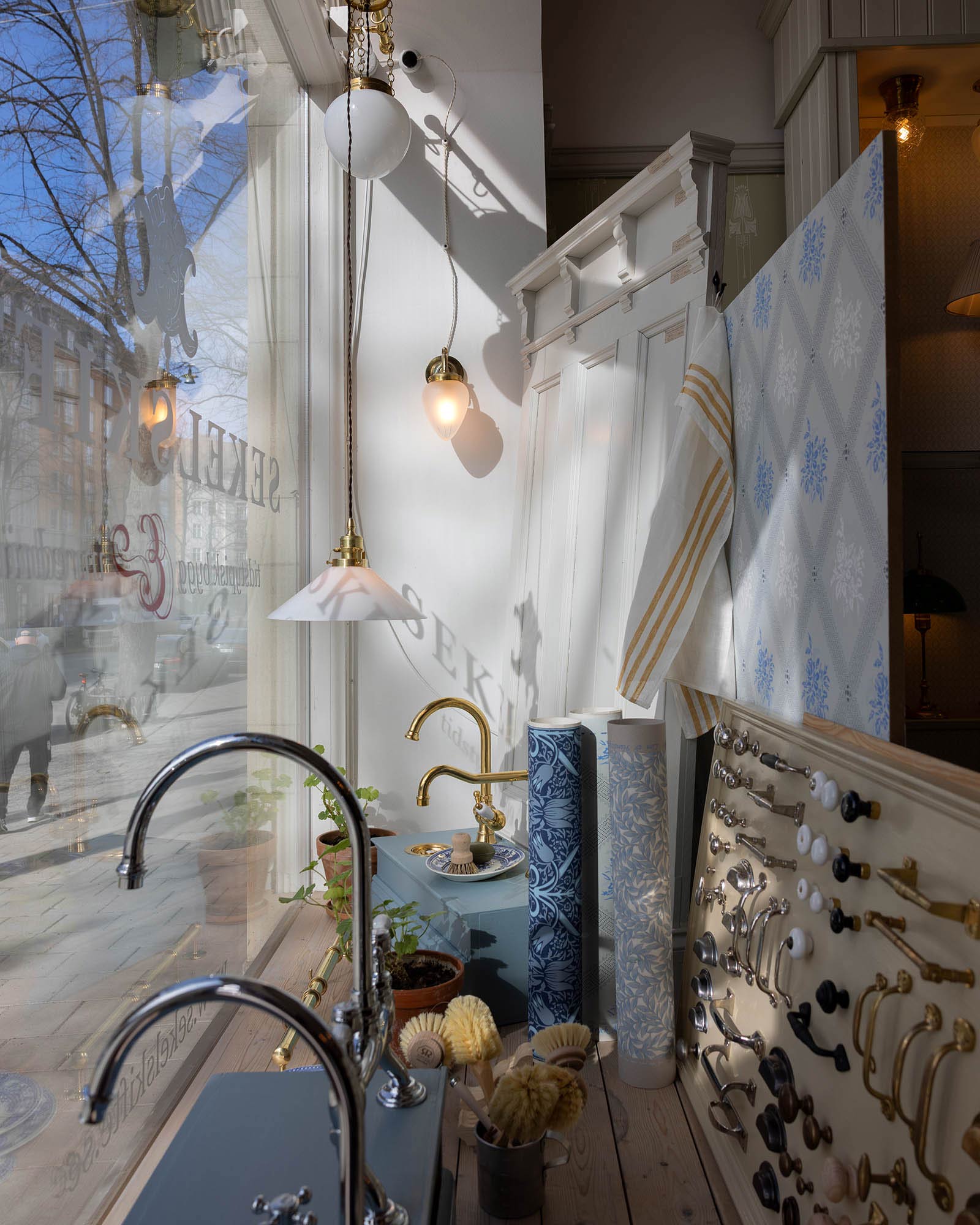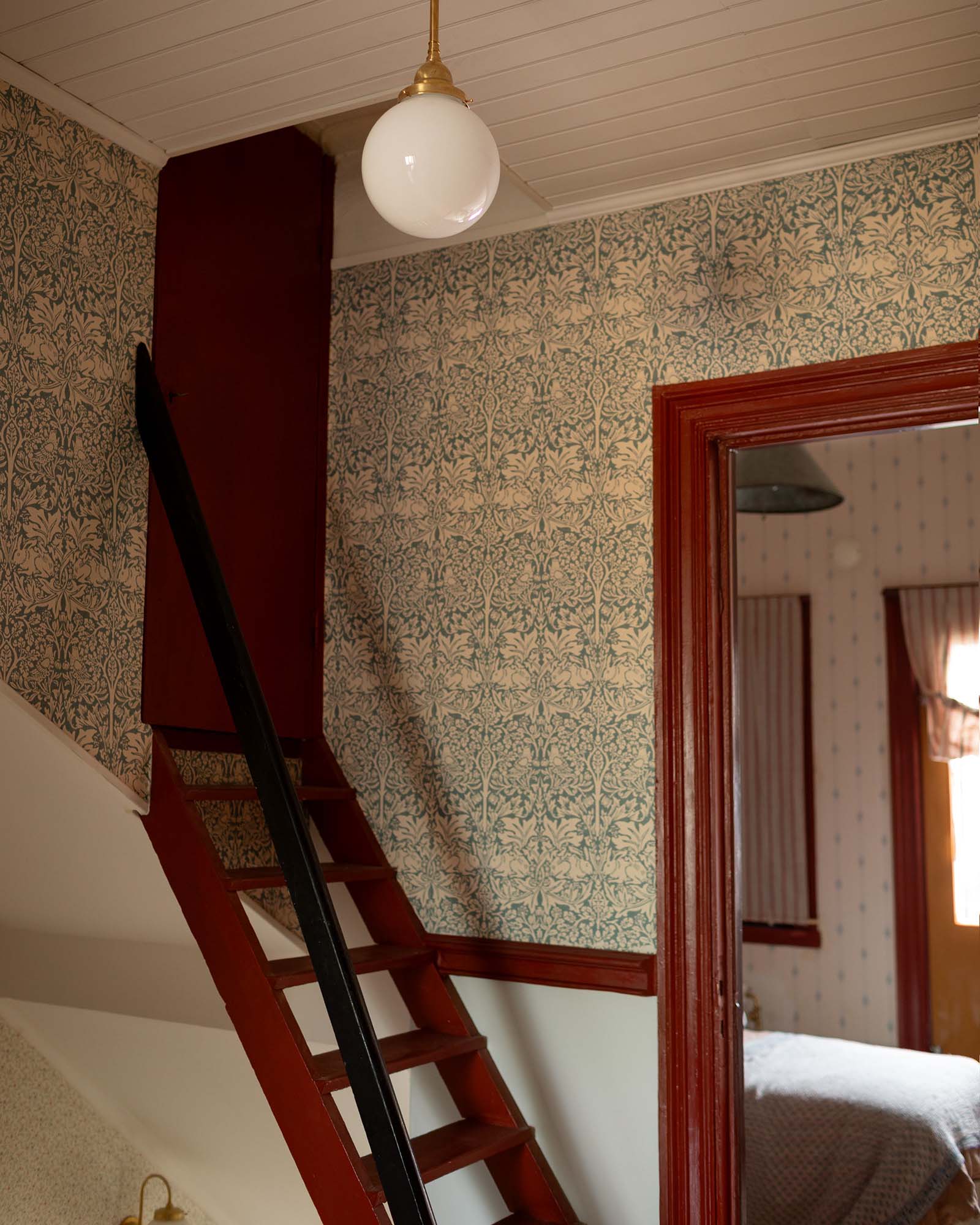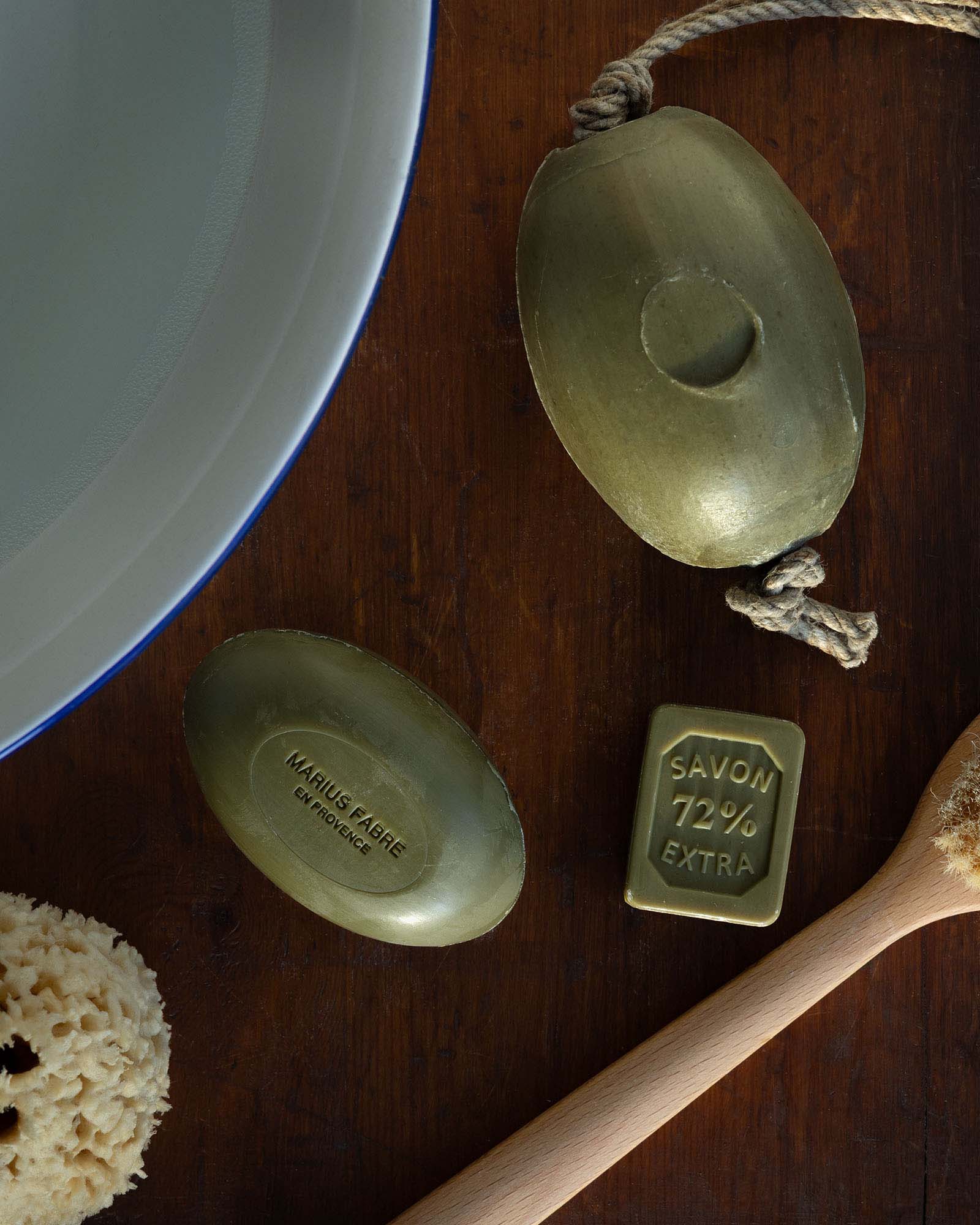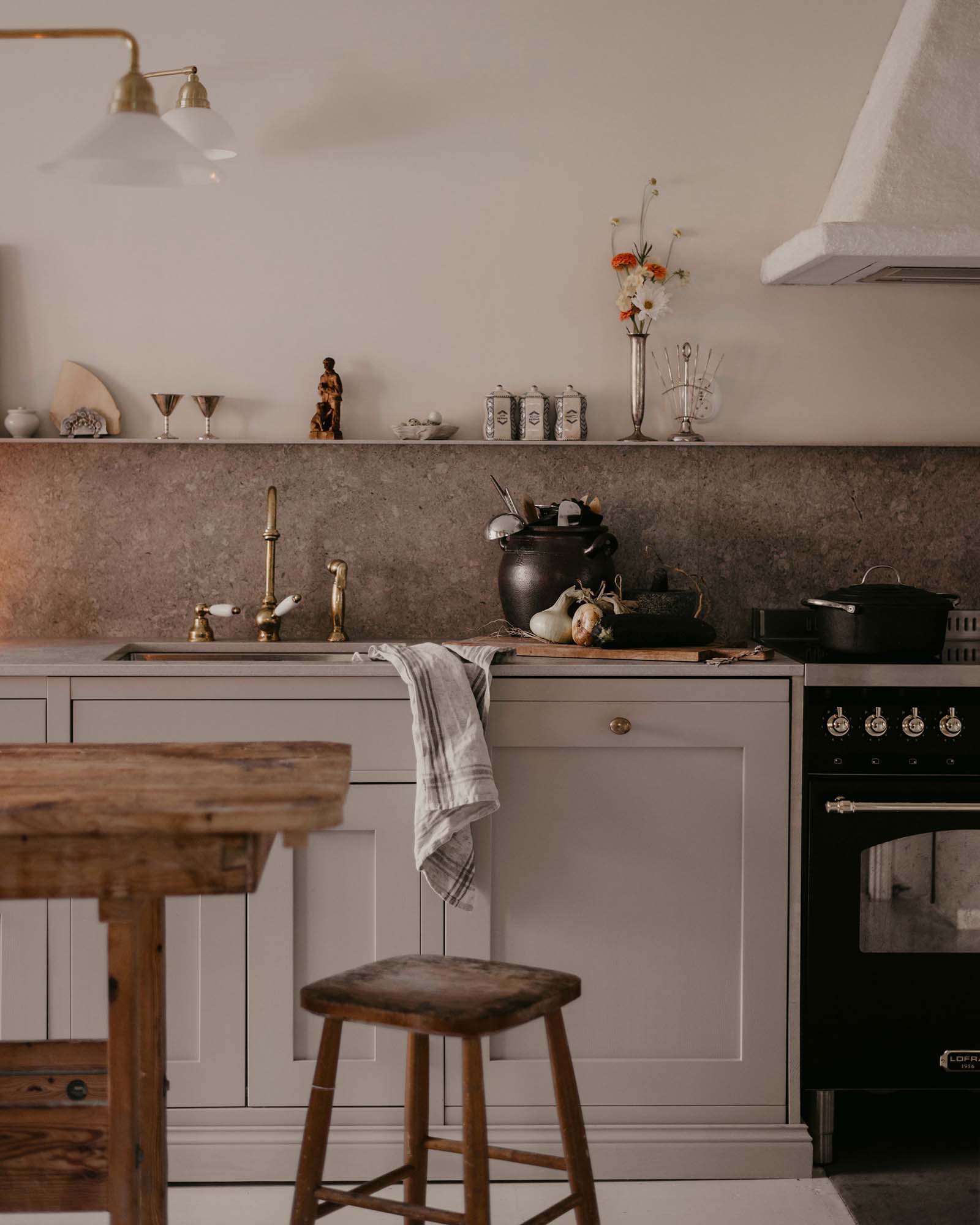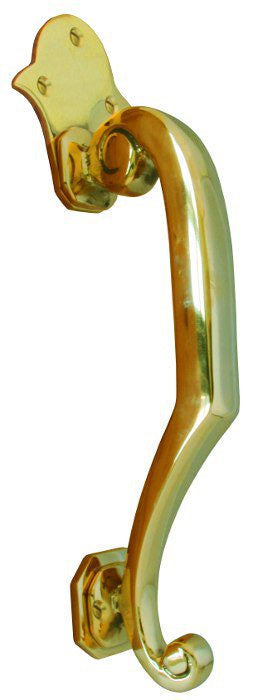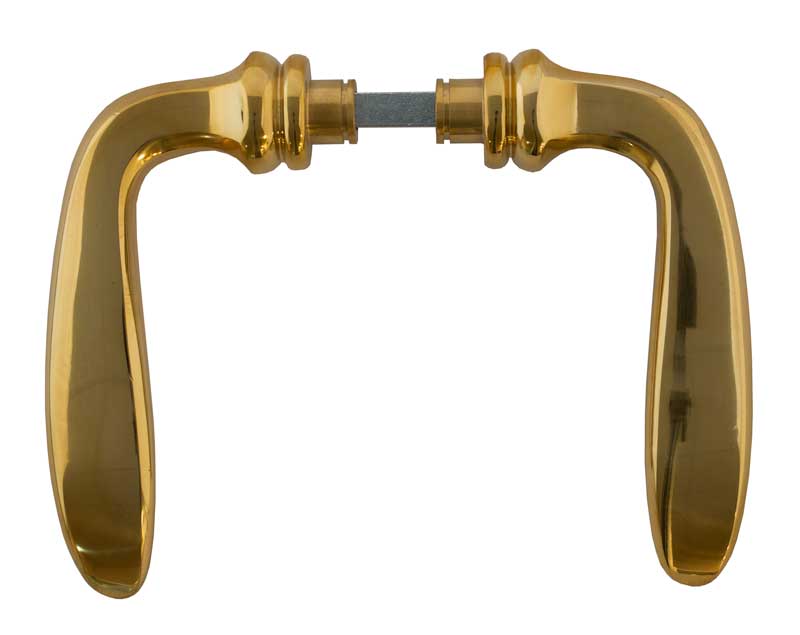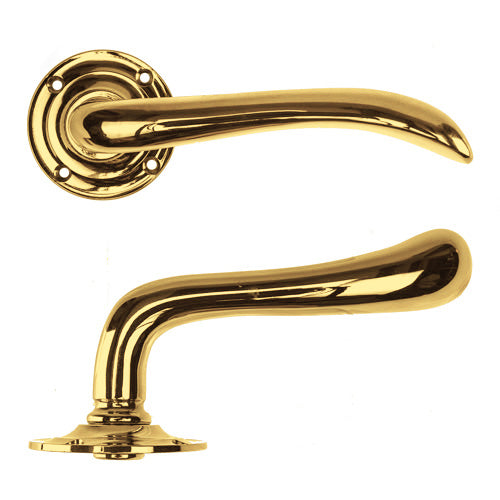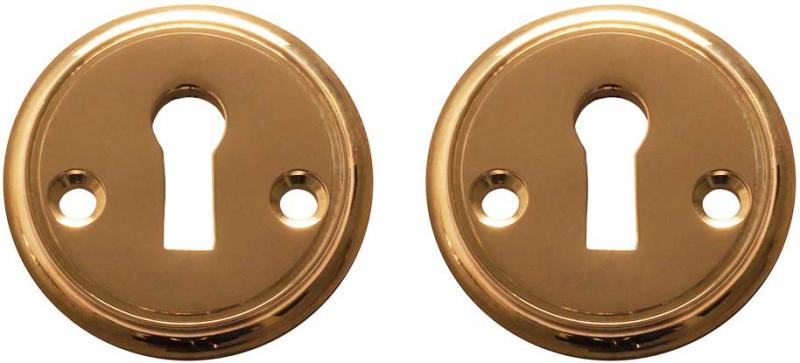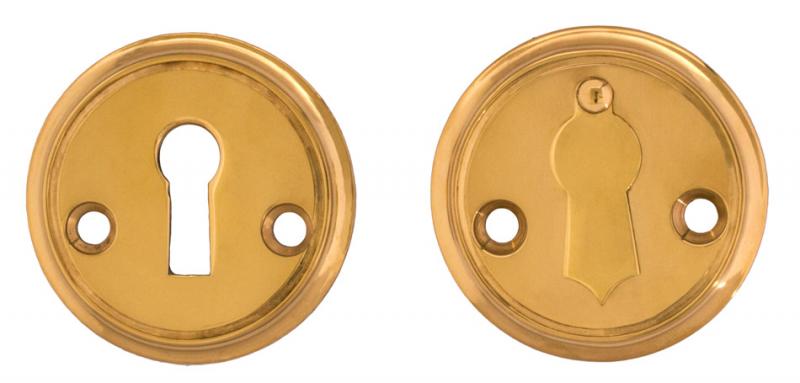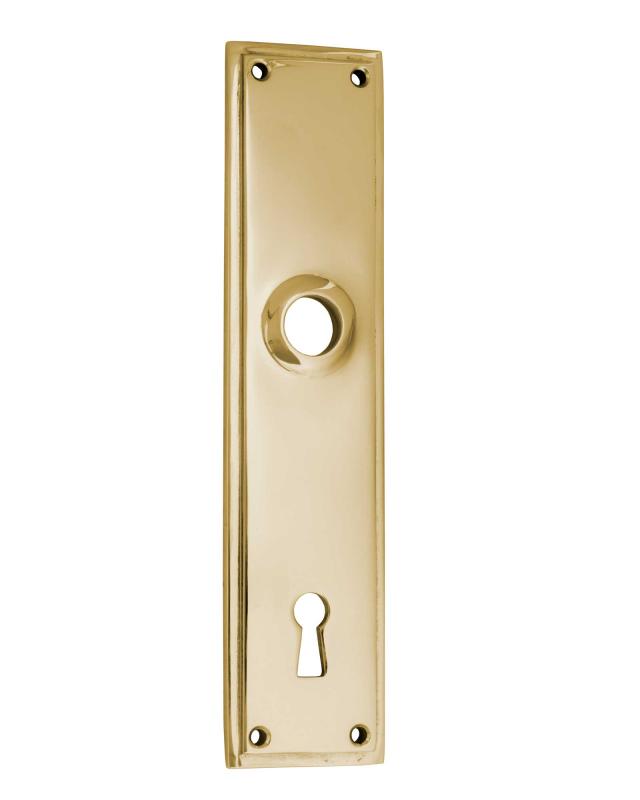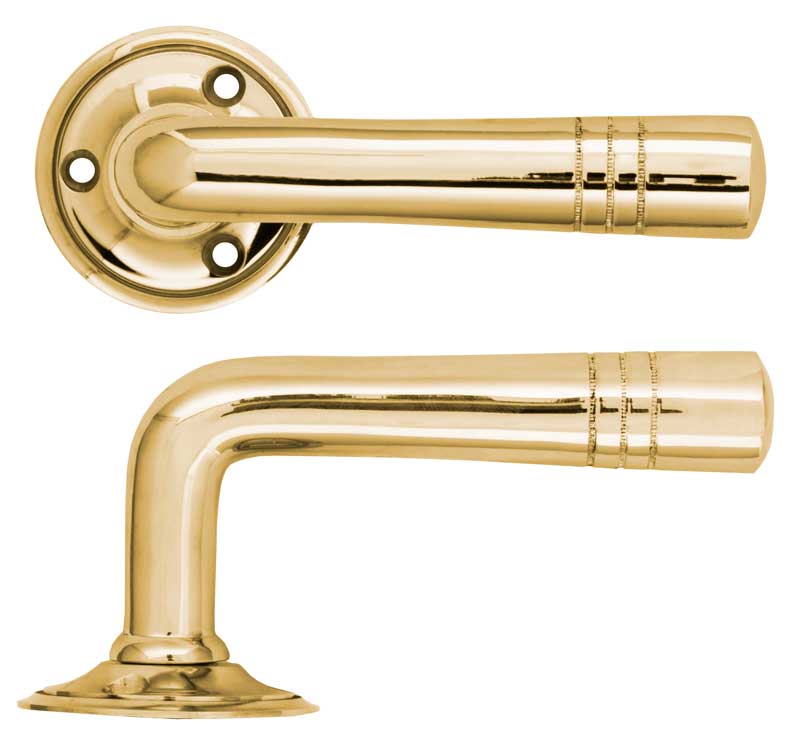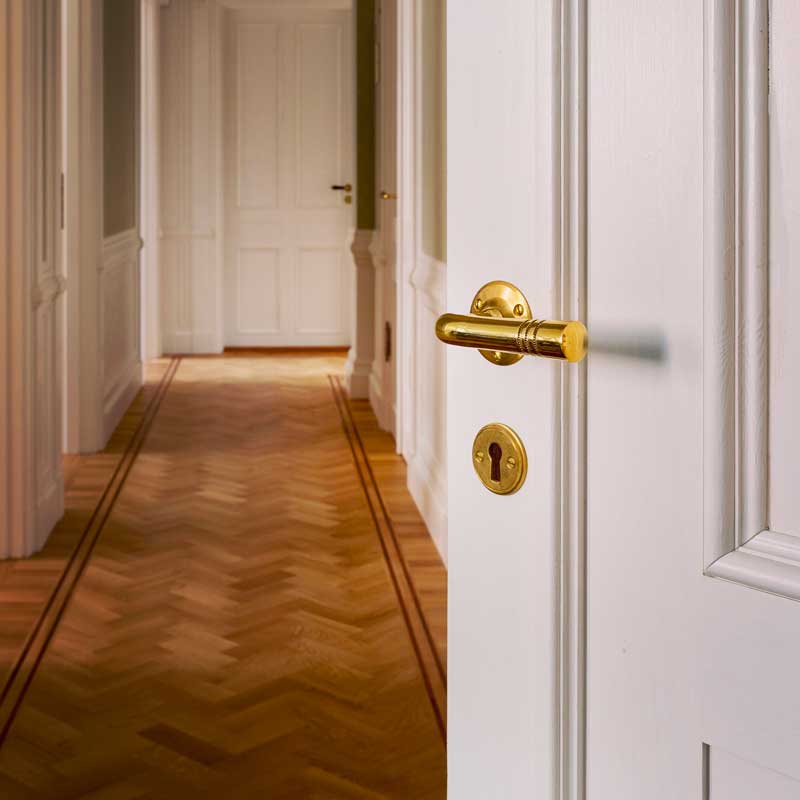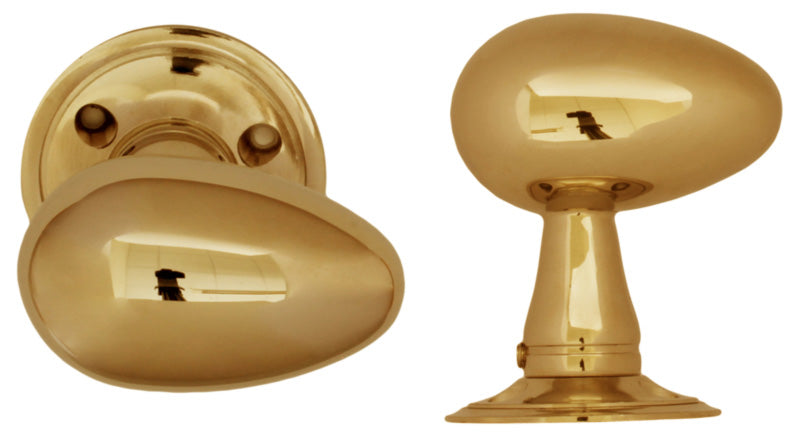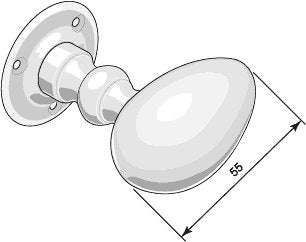Style History ~ 1900-1910 Art Nouveau
Portals & Staircases
Exterior Doors – 1900-1910
During the Art Nouveau period, the exterior door is a crucial part of the facade's composition and can be placed symmetrically or asymmetrically. Often, there is a round or oval transom window above. The doors are made of light wood species and varnished to bring out the texture of the wood. Double doors are most common, but single doors also appear. The door panels are simpler in design but may have curved shapes and glass. The door handles are cast in brass or bronze with a soft, typical design language. Several handles are mass-produced, while some are uniquely crafted for specific houses.
The villa's exterior door is usually a wide single door with various panels and a mullioned glass that can bring light into the hallway. The door leaf is painted with linseed oil paint in light colors such as white, light gray, ochre, or green. Varnished doors are also common, similar to apartment buildings. The doors have softly shaped handles with long plates made of solid brass and hinges with decorative knobs.
Staircases - 1900-1910
The transition from the late 19th-century classical forms to the Art Nouveau's flowing designs and interest in the Nordic flora is evident in the colors and stuccoes of the staircases. The stairwells are characterized by light colors with details in yellow or bronze. In lavish staircases, wall marbling in shades of yellow and green is popular. On top of the marbling, the walls are often treated with stucco lustro to create a shiny surface (a glossy stone-like surface of lime + paint mixed with soap and treated with wax and hot irons.)
The walls can be adorned with painted friezes and stucco reliefs, such as protruding white-painted pillars and pilasters ending with a capital in period-style decor or borders with period-style motifs in stronger colors. Simpler stairwells are usually painted with darker walls below and lighter wall fields above. The ceiling often has white-painted stucco lists, and the floor and staircase are laid with Carrara marble. There is also cement mosaic, terrazzo, which consists of crushed granite and marble mixed with cement to create differently colored or patterned tiles.
The stair run is placed against the courtyard and can have both curved or straight runs with masonry or open balusters. As before, windows are often designed with leaded glass windows. These can either have stained glass windows in artistic patterns or the cheaper alternative of direct painting on clear glass, often with floral motifs, such as roses. In the stair run, the banisters are often designed with turned grain-painted posts or iron railing with geometric shapes, often bronzed.
The handrail along the wall is made of wood, round in shape, and with turned knobs as an ending. The elevator in the stairwells is built for about 3-4 people and is designed as its own little room, clad with wood paneling and mirrors with polished edges. Often, there is a custom-built bench with a leather-clad cushion. The elevator car is placed in the stairwell and is equipped with wire mesh and wrought ironwork in soft flowing forms or stylized floral patterns. The wrought ironwork is painted in gold, black, or bronze colors.
In the ceilings of the staircases, a ceiling fixture with an opal glass dome or faceted glass on a brass base was often placed. The edges of the faceted glass create a beautiful light pattern in the room. Pendant fixtures are also common, which can be designed with a brass frame in floral patterns with an opal glass dome as a finish.




























































































